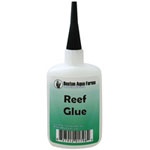A quarantine tank is simply a small aquarium that is set up for the purpose isolating a fish, or fishes, from your display aquarium. Quarantine tanks are inexpensive and easy to set up, and are an investment in protection for your display aquarium.
Parasites, injury, and infectious disease are an unfortunate, and unavoidable, aspect of the aquarium hobby. One of the main purposes of a quarantine tank is to hold new fish purchases in an isolated tank that allows for easy observation. If the fish should show signs of parasites or other infections you can medicate with no risk of infecting the fish in your main tank. If you have invertibrates, or live plants in your display, you are severely limited in your choices of effective medications, not introducing pathogens is your best defense. A quarantine tank also gives new fish an opportunity to get used to processed food without having to compete with your established fishes that most likely are aggressive eaters. Another benefit of a quarantine tank is that it also gives you somewhere to put injured or aggressive fish that you may need to remove from your display.
For most fish an aquarium of 10- 20 gallons will be fine, obviously larger fish or large numbers of fish will need a lager aquarium. You do not need to get fancy with your quarantine tank, a basic set-up is all that is required. A small power filter or air powered sponge filter, a heater, and standard aquarium light is all you need. A bare bottom aquarium works best, however something for the fish to hide in is important. A small cave constructed with rocks, some artificial plants, or a length of PVC tubing is recommended.
Quarantine of new fish should last for at least 21 days, this allows for extended observation, and for any parasites that may be present to complete their life cycles. If after 21 days there has been no sign of parasites or disease it is safe to acclimate and introduce your new fish to its permanent home with minimal risk of introducing any pathogens into your display. If at any point during quarantine you suspect there may be a problem with your fish, and you decide to medicate, your quarantine “clock” must be reset and you should start the 21 day period over again. Many parasites have multiple life stages, most medications are only effective against specific stages. For this reason, only an extended exposure to medication is truly effective against many parasites. This is also why some parasitical problems seem to come and go, the parasite may only become visibly apparent at certain life stages, although they were there “hiding” all along.
Controlled feeding is another important function of a quarantine tank. Wild caught fish can be very slow to acclimate to prepared foods, and may be very timid towards accepting new types of foods. Without competition new fish get a chance to adjust at their own pace, allowing them to compete once they are ready for the display aquarium. Use of appetite enhancers, like garlic, can also aid in training finicky fish to accept new foods.
There a few things that you can do to make setting up your quarantine tank fast and easy. You do not need to keep your quarantine tank running when not needed if you are limited on space. When needed, fill your quarantine tank with water from your display, this accomplishes a water change in your display, as well as gets you started with conditioned water in your quarantine tank. Another good trick is to keep your sponge filter, or cartriges from your power filter in your display tank. this keeps them colonized with bacteria and you will not have to worry about cycling your quarantine tank if you need it in a hurry. This is very easy to do if you use a wet dry filter on your display, simply hide them in the sump untill they are needed. You can set up an instant established quarantine system in just a few minutes if you plan for it (wouldn’t it be nice if your display was that easy)
Protect your display, you have put too much time, effort, and expense into your aquarium to put it at risk. A little patience and prevention will save you a lot of stress and disappointment.
Dave
 That Fish Blog – Aquarium Advice and Information
That Fish Blog – Aquarium Advice and Information




What autofeeder is recommended for indoor goldfish tank? I only got a 10-gallon tank. I need an autofeeder because I
Unless you are taking an extended trip I do not recommend an auto feeder for your tank. For a small goldfish tank, they do not need to be fed on a daily basis or as often as many foods recommend…you could supply a bunch of anacharis or 2 in the tankas they can eat the greens at their leisure, if you are going away for a few days.